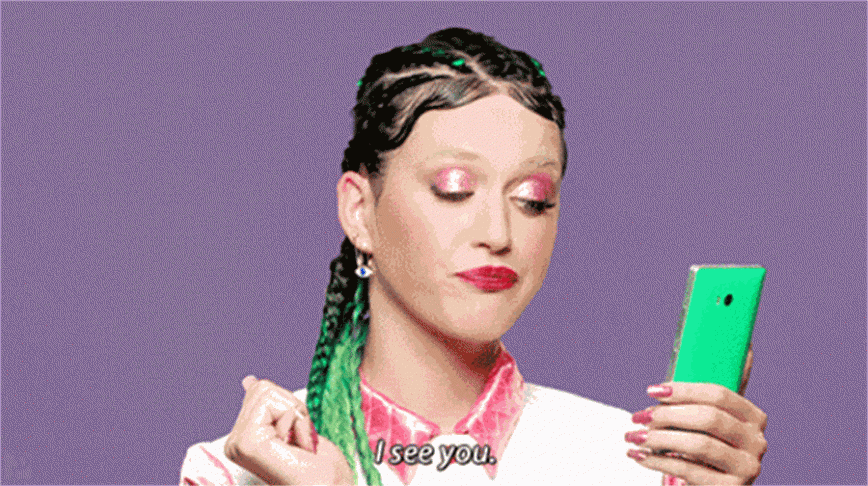Cultural appropriation is defined as a “sociological concept which views the adoption or use of elements of one culture by members of a different culture as a largely negative phenomenon”. Or, as I say, it’s picking and choosing which parts of a culture you want to participate in, often reducing significant cultural wear or styles to fashion statements. It’s wearing a hijab and bindi in a selfie without having to deal with the micro-aggressions many of us face while sporting the same attire. Especially with Islamophobia being pretty rampant right now, many hijabis face violent consequences for wearing things inherent to their culture, whereas someone posing in one is unlikely to suffer the same injustice.
Although it seems like a fairly easy concept to grasp, many people still argue that being able ‘express’ themselves in imitation dreadlocks and eBay-purchased bindis is more important than the consideration of the culture they‘re jacking from. It’s pretty comical to see the same people who once complained about wearing band t-shirts if you’re not a real fan of the band brush off the concept as over-dramatic.
“Angelina Jolie visited Pakistan, surrounded by woman in hijabs, wearing one herself as a means to fit in and show respect toward the culture”
Cultural appropriation’s toxicity is hard to fully comprehend if you don’t have an understanding of white supremacy. Picture this: you tweet a hilarious, well-thought-out joke and get zero likes or retweets. People might even call it lame or mock you for posting it. Someone with a lot of followers, who’s viewed favourably, copies your exact tweet and it goes viral. It ends up on large news platforms, screenshots of the joke repeatedly shoved in your face as you log on to Instagram, reminding you that someone who has a bigger presence on the internet has received recognition, credit and profit for something you created.
Black hairstyles (locs, cornrows, twists) are stigmatised and deemed unprofessional by many businesses and corporations, pegging a natural hairstyle as unkempt. There are countless articles about black people unable to get jobs because of these looks. The thought of a black woman with beautifully maintained locs sitting on a couch after being refused a job, watching a white singer sport ‘dreads’ on a VMAs stage is understandably unsettling. It’s hard to stomach watching a race that enjoys legal and financial superiority adopting parts of oppressed cultures while actual members of said cultures are demonised.
Admittedly, there is a fine line between appropriation and appreciation, and many grow frustrated trying to differentiate. The first questions to ask yourself before you pick up at that dashiki or book your henna appointment are: “Am I reducing this to a fashion statement? Are people of this culture the ones who are profiting off of this? Am I in an environment where this is appropriate?” Let’s have a look at some instances of moments when you should check yourself for cultural appropriation.
GETTING HENNA DONE FOR COACHELLA
Getting henna done before Coachella by a white-owned company is appropriation. Getting henna done at your south Asian best friend’s wedding is not. Henna is traditionally used as part of special occasions – including, but not limited to, weddings and holidays. In many cultures across south Asia, the Middle East and some parts of Africa, it represents celebration. It is often used as a representation of womanhood and femininity, worn proudly to exemplify milestones and accomplishments. It isn’t typically used to celebrate standing around in the sun waiting for Alt-J to come on.

WEARING A NATIVE AMERICAN HEADDRESS TO A LANA DEL REY CONCERT
People love to wear headdresses to concerts. But the history matters here. Feathers and even facepaint have spiritual significance, depending on tribe and individual Native American interpretation. They’re both earned through good deeds, used as a means to showcase honour and victory. You must be given permission to wear them after you’ve earned the right to as part of the tribe. Unfortunately, there are a lot of white people out there who love getting dressed up as Native Americans, much to the chagrin of a culture that deems them sacred.

POSING IN A DASHIKI FOR A SELFIE
Generally, you do not want to contribute to the exploitation of a culture. Steering your hard-earned cash toward an Etsy shop selling dashikis that isn’t African-owned, to post a selfie on Instagram, is just that. Dashikis are a traditional west African garment, usually colourful and sometimes embroidered. Certain colours of the dashiki are appropriate for weddings and celebrations, while others are reserved for funerals and mourning.

But it would be wrong to say that engaging with other people’s cultures is always out of line. Here are some times it’s A-OK.
GETTING HENNA DONE AT YOUR SOUTH ASIAN BEST FRIEND’S WEDDING
You are surrounded by people of the culture, you’re using it as a means to relate them in that environment and nobody’s profiting off of it who isn’t south Asian. This is appreciating someone’s culture, not mimicking it before Coachella.
IF YOU’RE VISITING THE COUNTRY IN WHICH THE CULTURE ORIGINATED
Angelina Jolie visited Pakistan, surrounded by woman in hijabs, wearing one herself as a means to fit in and show respect toward the culture. If you are in an appropriate environment, refusing to participate in certain practices can be viewed as disrespectful.

Another reason it’s hard for many to differentiate appropriation and appreciation is the belief that intentions come into play (they don’t). Hypothetically, a white girl with pure intentions and a deep understanding or appreciation for bindis will still be viewed favourably by society. Withholding privilege is beyond anybody’s control and definitely isn’t anybody’s fault, but it is something that needs to be acknowledged and handled accordingly. Make sure to always check your privilege and prioritise respect of a culture over that kimono you’re itching to post a selfie in. Cultural wear is more than a costume, more than a fashion accessory and more than ‘expressing yourself’.



